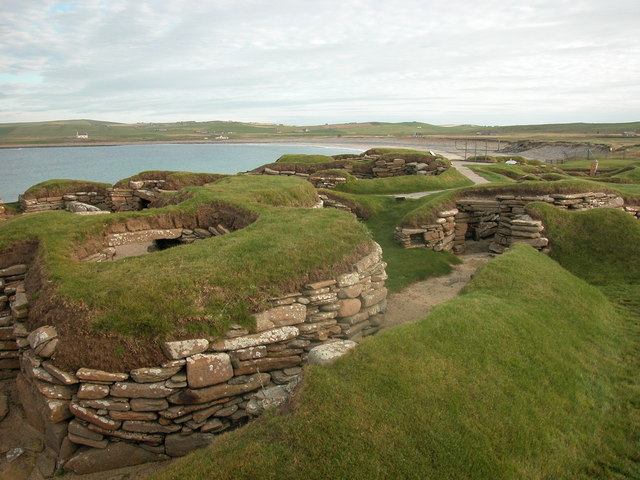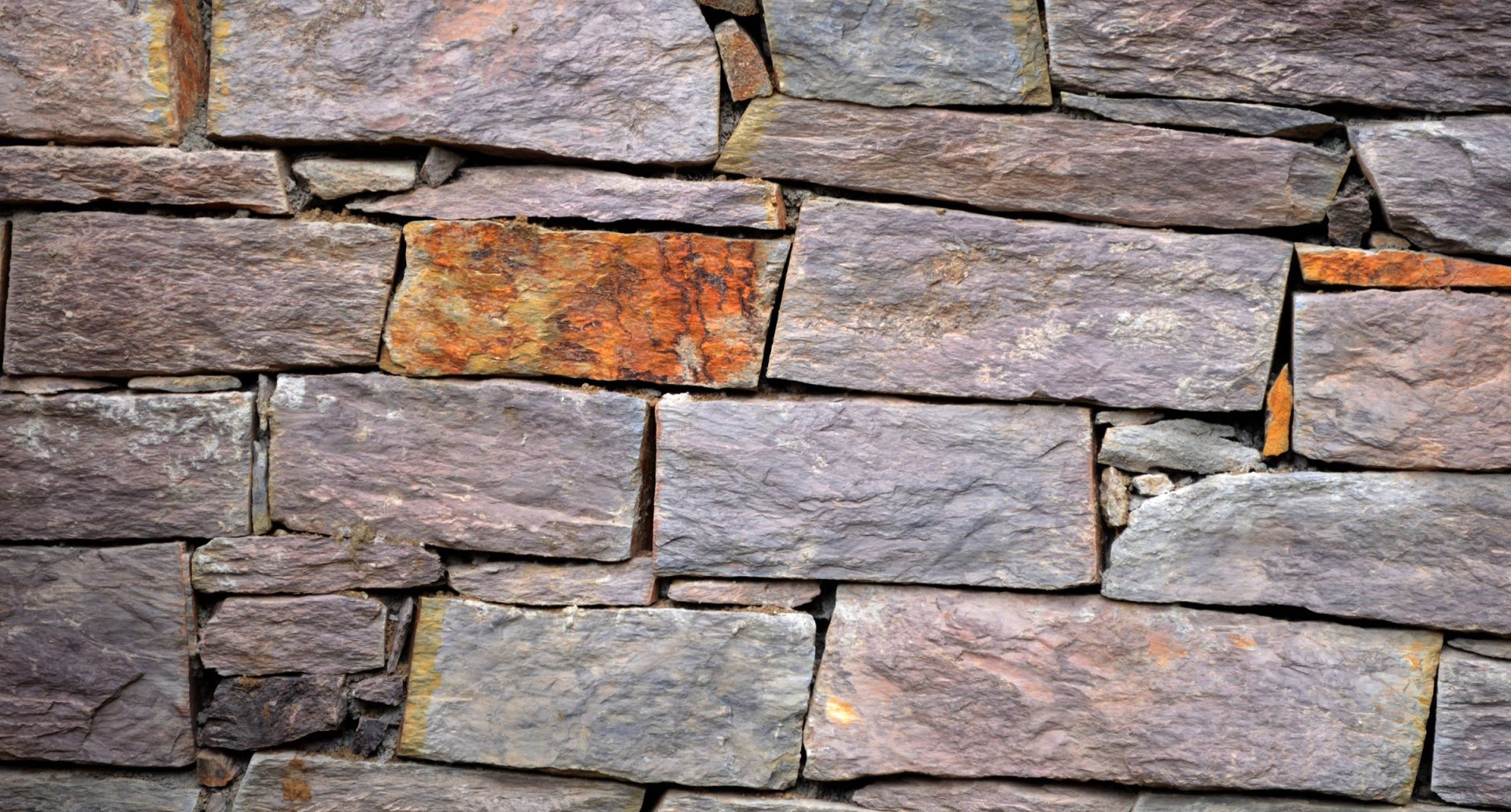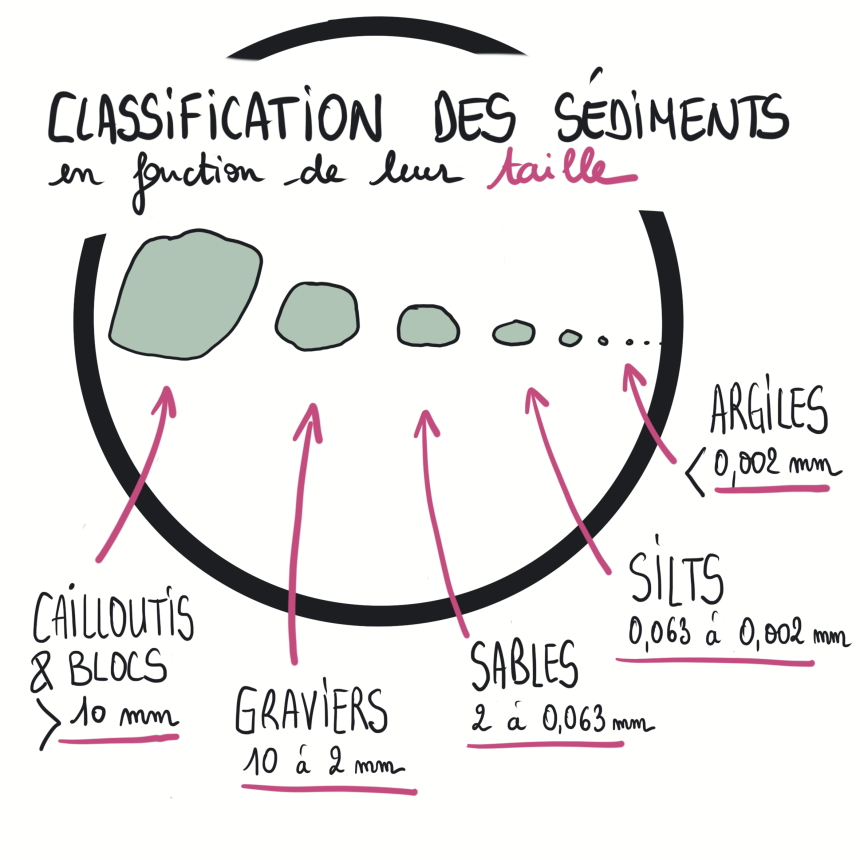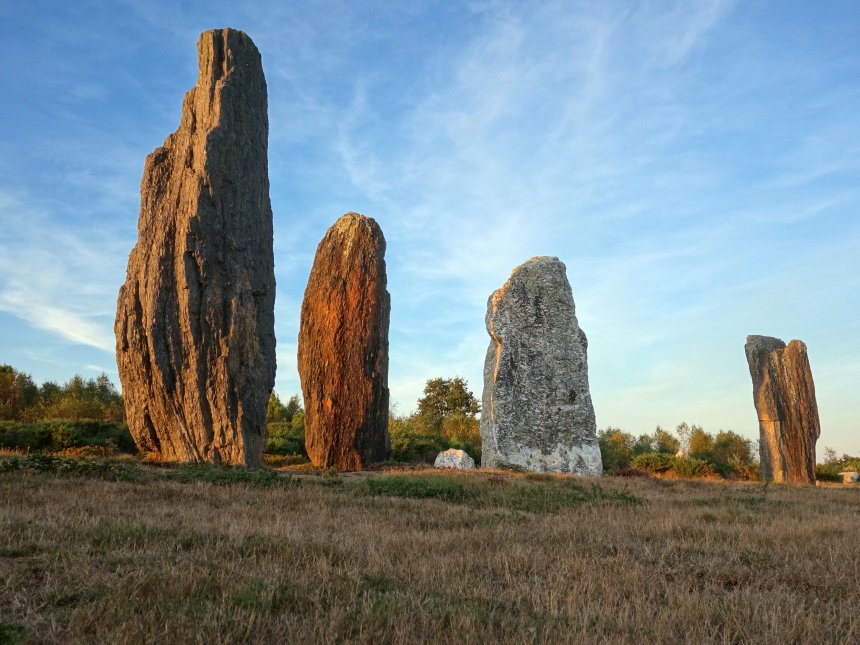Stone : siltite
Type : sedimentary rock
Age : 475 million years
Quarry : "Vieux Bourg", Saint-Just (Morbihan)
Purple Siltite
The stone from Saint-Just, commonly referred to as “purple schist,” is actually a siltite with coarse schistosity. Siltite is a sedimentary rock composed of grains that were once silts, with sizes ranging between 0.063 and 0.002 mm. Silts are finer than sands but coarser than clays. The Saint-Just rock is rich in quartz and white mica. Its mauve color comes from abundant hematite (iron oxide) pigments.
Between Land and Sea
The siltite layers are part of the Pont-Réan Formation. This geological unit outcrops in the Saint-Just area. It forms the base of the Paleozoic sedimentary sequence in Brittany: below it lie Briovérien rocks, and above it, the Armorican sandstone formation (see installation 6). The deposits in this formation tell an important chapter in the geological history of the Armorican Massif: the transition from an emerged land to a marine environment.
Current Use
This unique stone is suitable for all types of construction: masonry stone (as in the chamber), paving for terraces or pathways, mulch (chips), decorative blocks, etc. Its color palette (orange, brown, mauve, blue) is highly appreciated.
Once Upon a Time, the Neolithic

The chamber is an architectural nod to the archaeological site of Skara Brae, located in northeast Scotland. This over 5,000-year-old village is unique in Europe. The Saint-Just area is also known for its Neolithic archaeological heritage: the Bocadève alignment, the Tréal megalithic tomb, the Moulin alignments (photo), and more. The purple stone is omnipresent in these structures.


